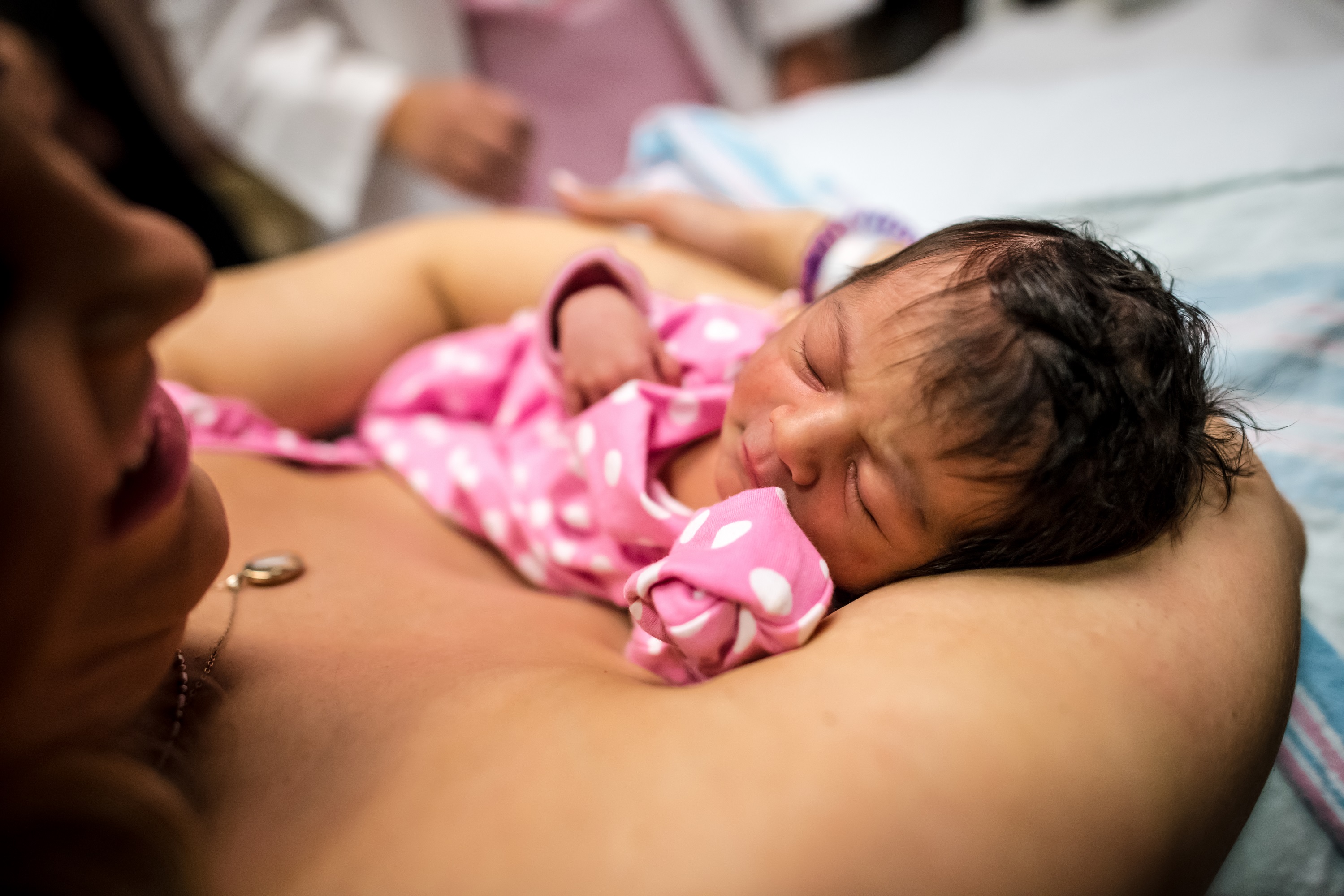Can You Breastfeed With Implants?

February 03, 2022
When it comes to nourishing your baby, experts say that “breast is best.” But what if you have breast implants? Is it safe – or even possible – to breastfeed?
Fortunately for those who want to nurse their babies, most women with implants can safely and successfully breastfeed, although the implants may somewhat impact a woman’s milk supply.
“Breast implants should not prevent most women from breastfeeding, although they may need to supplement the baby’s nutrition if the implants are keeping the baby from getting enough nourishment through exclusive breastfeeding,” says Antonia Kim, M.D., maternal-fetal medicine specialist (high risk obstetrician) and director of resident research at Hackensack University Medical Center.
Location matters
The location of breast implants and the incisions that are made to insert them may make it challenging for a woman to breastfeed successfully.
Implants may be placed between the glandular breast tissue and the muscle of the chest wall, or they may be placed beneath the muscle layer. When implants are placed directly against breast tissue, the pressure that they exert is more likely to crowd the milk ducts, making it more difficult for a woman to produce enough breast milk or for the milk to flow freely during feedings. When implants are placed beneath the chest wall muscle layer, they’re less likely to interfere with milk production or flow.
“If you are thinking about getting breast implants, you haven’t had children yet and you hope to breastfeed one day, talk with your plastic surgeon and a lactation consultant about the possible benefits of placing the implants beneath the muscle,” says Dr. Kim.
During breast augmentation surgery, implants may be inserted through incisions made in the armpit, in the crease beneath the breast or around the areola (the darker area surrounding the nipple). Incisions made in the armpit and beneath the breast are less likely to impact a woman’s ability to breastfeed. When incisions are made around the areola, nerves or milk ducts may be severed, which may reduce milk flow. However, some women who have had implants placed through incisions around the areola are able to breastfeed.
Other breastfeeding concerns
Some people worry that having silicon in the body may be harmful to a breastfeeding baby, but no evidence has shown this to be the case.
According to the Centers for Disease Control and Prevention and the American Academy of Pediatrics, silicon implants don’t pose a safety issue for breastfeeding babies. Researchers have found more silicon present in cow’s milk and baby formula than breast milk, according to an AAP statement.
Certain women choose to get breast implants because they have very little natural glandular breast tissue and they want to enhance their appearance. In some cases, these women may not have enough glandular tissue to produce sufficient amounts of breast milk, whether or not they get implants.
Implants may impact milk supply
Some women with breast implants may not be able to produce a full milk supply, even if they’re able to breastfeed. Sometimes, it’s because the nerves or milk ducts were damaged during surgery. Other times, the pressure of breast implants mimic the feeling of engorgement (breasts that are full of milk), which may signal to the body that it should produce less milk. Larger breast implants may be associated with less nerve sensitivity or more feelings of engorgement, which may impact breastfeeding.
If you’re unable to produce a full milk supply because of breast implants, you can supplement your baby’s nutrition with pasteurized breast milk from a human donor or with baby formula. Research shows that women with breast implants are less likely to exclusively breastfeed their babies than women without implants, but they’re still able to partake in the bonding experience.
“Women with breast implants who want to breastfeed shouldn’t assume that they can’t do it and never try; they should talk with their doctors during pregnancy about ways to do it, with a plan for supplementation, if necessary,” says Dr. Kim.
Next Steps & Resources:
- Meet our source: Antonia Kim, M.D.
- To make an appointment with Dr. Kim, or a doctor near you, call 800-822-8905 or visit our website.
The material provided through HealthU is intended to be used as general information only and should not replace the advice of your physician. Always consult your physician for individual care.
Find a doctor near me
How Early Can a Baby Be Born?

Learn about premature birth. JFK Medical Center experts explain survival rates and potential long-term challenges. Get expert care.
A Head Start at Breastfeeding

Get a head start on breastfeeding. Riverview Medical Center offers expert lactation consultant support to help you and your baby. Call 800-822-8905.
Find a doctor near me

Common Rashes in Kids & What to Do
Common kid rashes? Dr. Farook explains treatment options and when to seek care. Learn more and schedule an appointment today.

Things You Did Not Know About Kids and Arthritis
Learn about juvenile arthritis. Dr. Janow explains symptoms, diagnosis, and treatment for children. Get expert pediatric care today.

How to ID Common Kid Bugs
Identify common childhood illnesses (RSV, cold, COVID-19, flu). Learn how to differentiate symptoms & protect your child. Call 800-822-8905.

Should You Switch from Pediatrician to Family Doctor?
You may be wondering when it is appropriate to see a family doctor, or primary care physician.
